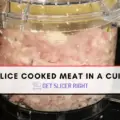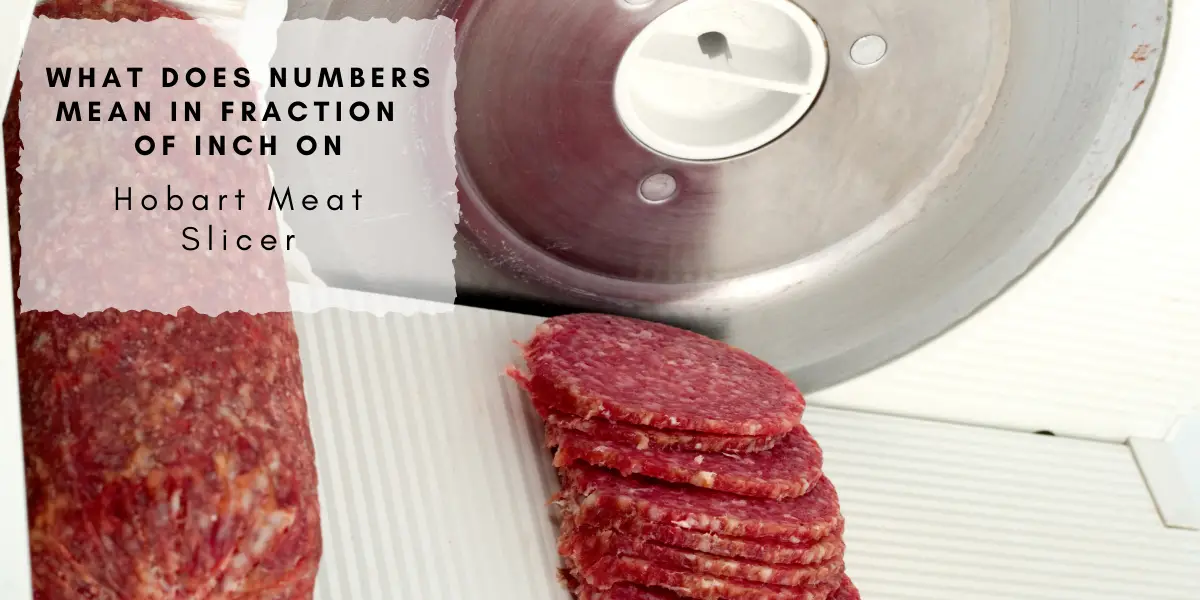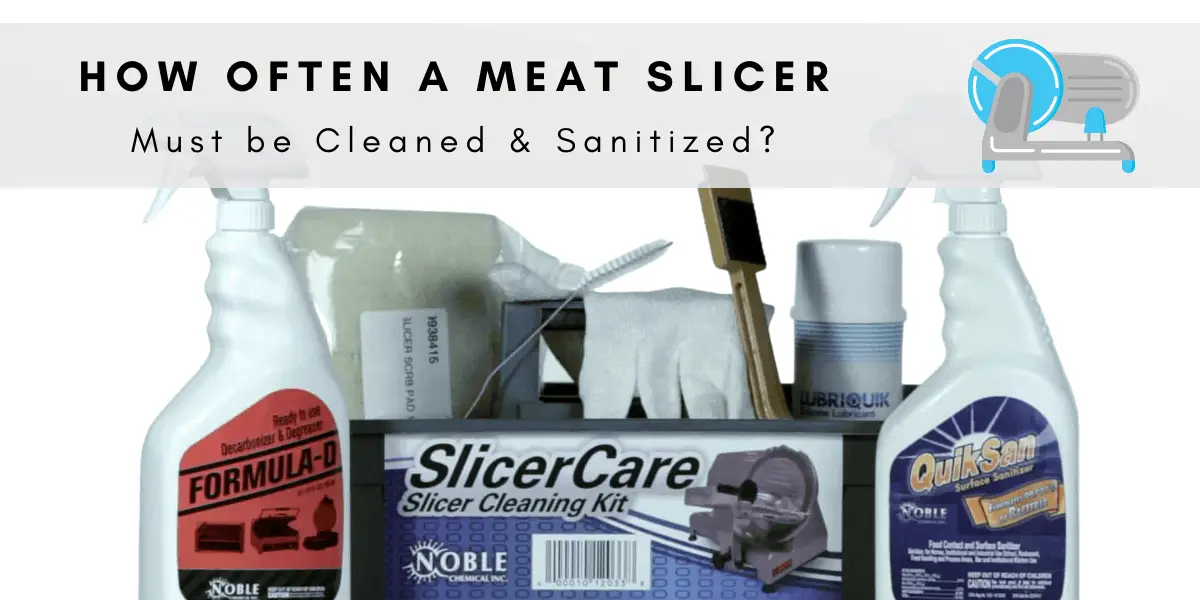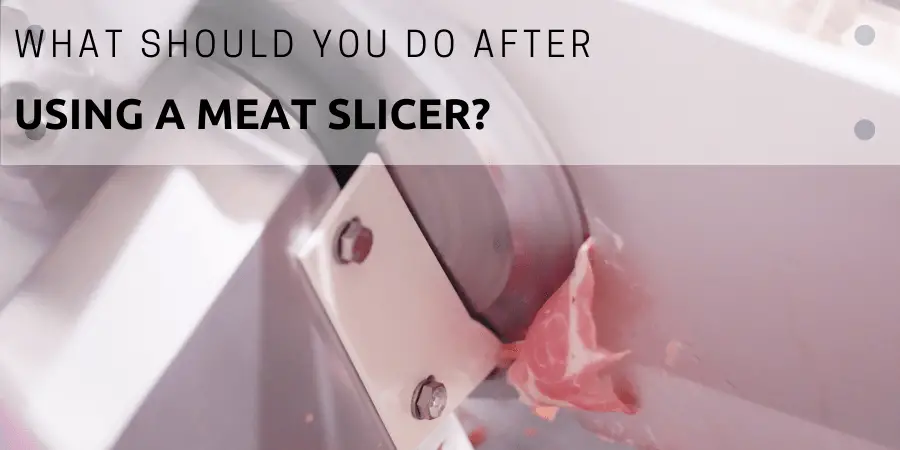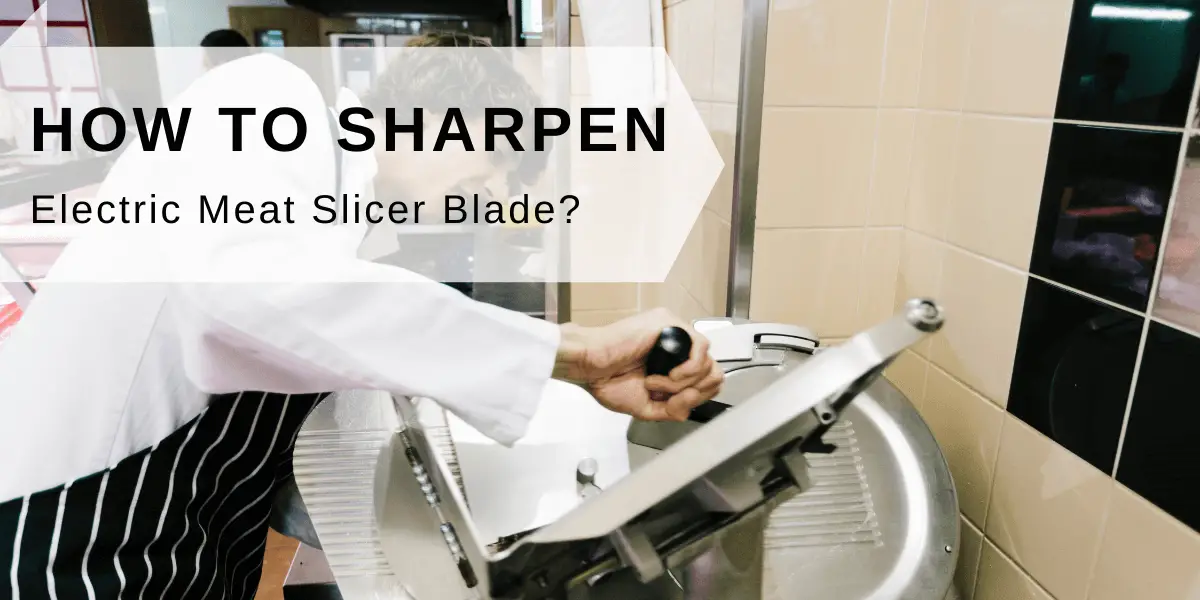To clean your Cuisinart Meat Slicer, start by unplugging and turning off the slicer for safety. Disassemble the removable parts, such as the blade, blade guard, and food carriage, and wash them in a mild soapy solution. Rinse the parts thoroughly and ensure they are completely dry before reassembling the slicer. Wipe down the main body of the slicer, sanitize the blade and surfaces, and give it a final wipe-down. It’s important to clean the slicer after each use and more frequently if used continuously. Remember to consult the user manual for specific instructions and avoid using abrasive materials or submerging the slicer in water.
Cuisinart Meat Slicer:
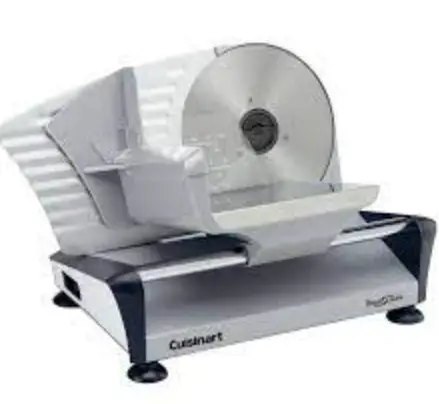
The Cuisinart Meat Slicer is a high-quality appliance designed to simplify food preparation by eliminating the time-consuming task of slicing meats. With its adjustable settings, you can achieve precision slices, from thin pepperoni to perfectly portioned roast beef. This versatile slicer is found in delis, grocery stores, cafeterias, buffets, catering businesses, and various food service establishments. It allows you to effortlessly slice meats, cheeses, and produce, making it an indispensable tool in the kitchen. Understanding how to clean and maintain your meat slicer is crucial to ensure optimal performance and hygiene. While the slicer may eventually require replacement, proper care, and maintenance can extend its lifespan.
Tips to Keep in Mind Before Cleaning Your Meat Slicer
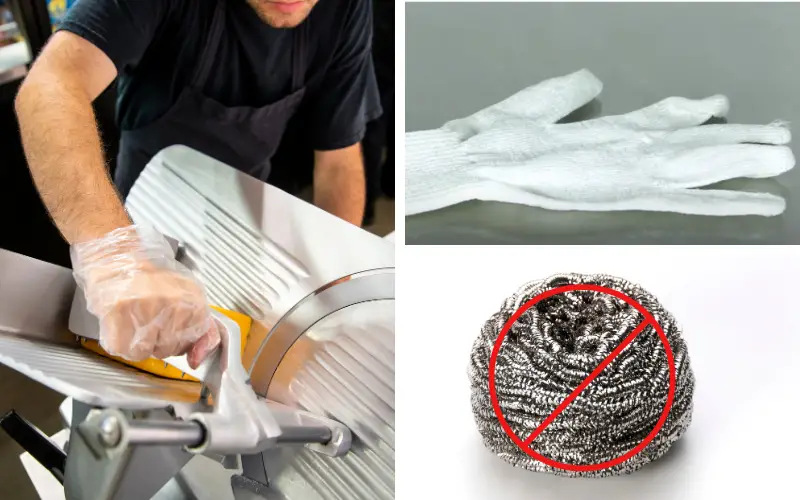
Before you begin the cleaning process for your meat slicer, it’s important to follow these tips to ensure safety and prevent damage to the machine:
Wear Protective Gloves:
Always wear protective gloves when cleaning your meat slicer, particularly when handling the sharp blade. Cut-resistant gloves, such as those made of metal, are highly recommended to minimize the risk of accidental cuts or injuries.
Follow the Manufacturer’s Instructions:
It’s essential to carefully read and strictly follow the instructions provided by the manufacturer for cleaning your specific meat slicer model. The manufacturer’s instructions will guide disassembly, cleaning methods, and any specific precautions to take.
Avoid Steel Wool:
Never use steel wool or any other abrasive materials when cleaning your meat slicer. Steel wool can scratch the machine’s surfaces, compromising its integrity and making it more difficult to clean in the future. Instead, opt for soft sponges or cloths that won’t damage the slicer.
Don’t Submerge the Slicer Completely:
Do not immerse your meat slicer completely in water or any cleaning solution. Check your slicer’s manual for guidance on which parts are dishwasher safe and how to care for the other components. Follow the recommended cleaning instructions to ensure proper maintenance and prevent damage to the slicer.
Step-by-Step Guide to Cleaning a Cuisinart Meat Slicer
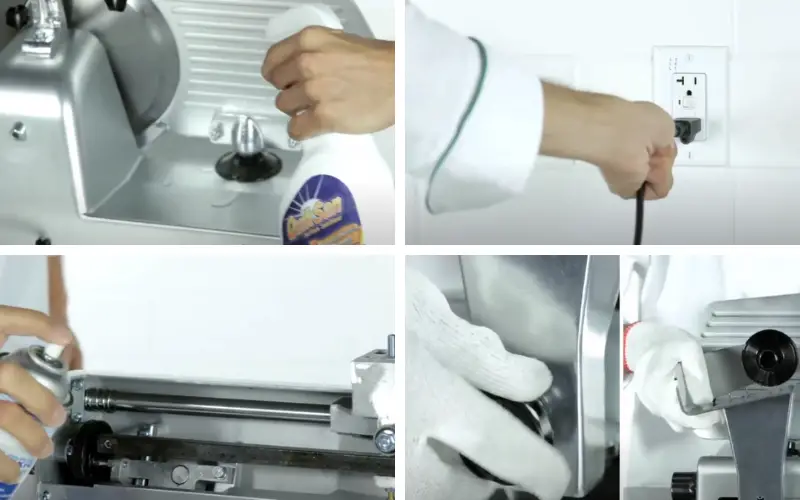
Cleaning your Cuisinart Meat Slicer is a simple process that involves several important steps. By following these instructions, you’ll keep your slicer in top condition and ensure the safety of your food.
Unplug and Turn Off:
Before cleaning your meat slicer, always make sure it is unplugged from the power source and turned off. This is crucial for your safety during the cleaning process.
Prepare Cleaning Solution:
Create a cleaning solution by mixing warm water with a mild dish soap or a sanitizing solution recommended by the manufacturer. Avoid using harsh chemicals or abrasive cleaners as they can damage the slicer.
Disassemble the Slicer:
Carefully disassemble the removable parts of the slicer, such as the blade, blade guard, food carriage, and any other components that can be detached. Refer to the user manual for specific instructions on disassembly.
Clean Removable Parts:
Wash the disassembled parts in the prepared cleaning solution. Use a soft sponge or cloth to scrub away any food residue or stains. Pay close attention to hard-to-reach areas and crevices where bacteria may accumulate.
Rinse Thoroughly:
After cleaning, rinse all the parts with clean water to remove any remaining soap or cleaning solution. Ensure that no soap residue is left behind.
Dry Completely:
Use a clean towel or air-dry the parts to ensure they are completely dry before reassembling the slicer. Moisture can lead to rust or bacterial growth, so drying is crucial.
Wipe Down the Main Body:
While the removable parts are drying, wipe down the main body of the slicer with a damp cloth. Pay attention to the areas around the blade and any other surfaces that may have come into contact with food.
Reassemble the Slicer:
Carefully reassemble the slicer once all the parts are dry according to the manufacturer’s instructions. Ensure that all components fit securely in their proper positions.
Sanitize the Slicer:
To further ensure food safety, sanitize the slicer using a food-safe sanitizer or a mixture of water and bleach (follow the manufacturer’s recommended dilution ratio). Apply the sanitizer to the blade and other surfaces, and let it sit for the recommended contact time. Then, rinse thoroughly with clean water.
Final Wipe-Down:
Give the entire slicer a final wipe-down using a clean, damp cloth. This will remove any remaining sanitizer residue and leave your slicer clean and ready for use.
Why It’s Important to Clean a Meat Slicer
Using a meat slicer for slicing deli items and produce offers convenience and efficiency in food preparation. However, regular cleaning of your meat slicer is essential for several important reasons:
Preventing Bacterial Growth:
When a meat slicer is not cleaned regularly, food residue can accumulate in various parts of the machine. This residue becomes a breeding ground for bacteria, including harmful pathogens such as Salmonella and Listeria. If these bacteria contaminate the slicer, they can transfer to the foods you slice, posing a significant health risk to your customers.
Avoiding Foodborne Illnesses:
The growth of bacteria on an uncleaned meat slicer can lead to foodborne illnesses. Consuming foods contaminated with these bacteria can cause severe illness, ranging from stomach discomfort to more serious complications. By regularly cleaning your meat slicer, you minimize the risk of bacterial contamination and protect the health and safety of your customers.
Maintaining Flavor and Texture:
Food residue and flavors from previously sliced items can stick to the slicer’s components. If not cleaned, these remnants can transfer onto the next items you slice, altering their taste and texture. This can be particularly problematic when dealing with delicate or nuanced flavors. Proper cleaning ensures that each item retains its intended flavor and texture, providing a consistent and enjoyable dining experience.
Specific Problem Areas in Cleaning a Meat Slicer
While cleaning your meat slicer, it’s essential to pay attention to specific problem areas that can harbor food residue and pose a risk of bacterial growth. By monitoring and addressing these areas, you can maintain a clean and hygienic slicer:
Ring Guard Mounts, Blade Guards, and Slicer Handle:
Regularly inspect the ring guard mount, blade guard, and slicer handle for any cracks, breakages, or missing/unattached components. These parts are prone to accumulating food particles, which can become breeding grounds for dangerous bacteria. If you notice any issues, replace the damaged or missing parts with new ones specifically designed for your meat slicer.
Ring Guard Mounts:
Food particles tend to accumulate around the ring guard mounts. Carefully clean these areas to remove any residue, as they can become hidden sources of bacterial growth.
Inside Blade Guards:
Food residue can accumulate inside the blade guards of your meat slicer. Thoroughly clean this area, paying close attention to the nooks and crannies where food particles can get trapped.
Under the Slicer Handle:
The underside of the slicer handle is another spot where food debris can accumulate. Make sure to clean this area diligently to prevent the buildup of bacteria.
Seams, Seals, and Gaskets:
Regularly examine the seams, seals, and gaskets on your meat slicer for signs of wear and tear. If these components have worn away, they can create additional cracks and crevices where food and bacteria can accumulate. Using a slicer with missing, broken, unattached, or defective seals, seams, or gaskets should be avoided, as it poses a significant risk of bacterial contamination. Remove the slicer from service and repair it before using it again to eliminate any trapped bacteria.
When to Clean Your Meat Slicer
Proper cleaning of your meat slicer is crucial for maintaining food safety and preventing the buildup of harmful bacteria. Here are some guidelines to follow regarding when to clean your meat slicer:
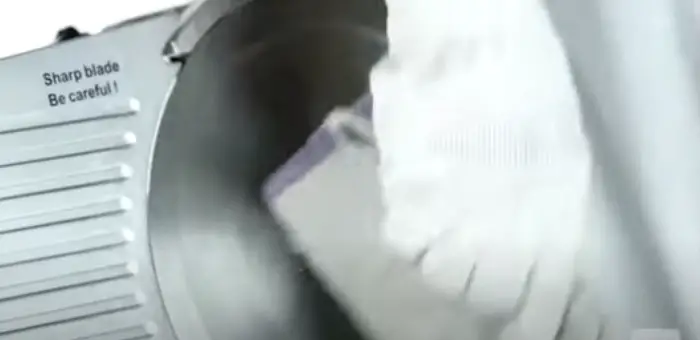
Wipe Down Between Uses:
It’s important to wipe down your meat slicer every time you switch between different types of meats, cheeses, or produce. This helps remove any visible debris and prevents cross-contamination between different food items.
Daily Cleaning:
Performing a thorough cleaning of your meat slicer at the end of each day is highly recommended. This daily cleaning routine ensures that any oils, fats, or solid food particles that have accumulated on the blade or faceplates are removed. By preventing buildup, you minimize the risk of bacteria growth and maintain the slicer’s cleanliness.
Continuous Use Cleaning:
If your meat slicer is used continuously for an extended period, such as in a commercial setting, it’s necessary to clean it more frequently. The FDA recommends cleaning meat slicers every 4 hours when they’re being used continuously. Adhering to this recommendation helps prevent bacteria from multiplying and spreading, ensuring food safety.
Frequently Asked Questions
How often should I clean my Cuisinart Meat Slicer?
It is recommended to clean your meat slicer after each use. If you use the slicer continuously, such as in a commercial setting, the FDA recommends cleaning it every 4 hours to prevent bacterial growth and maintain food safety.
Can I put the removable parts of my Cuisinart Meat Slicer in the dishwasher?
Refer to the user manual to determine which parts of your Cuisinart Meat Slicer are dishwasher safe. While some components may be dishwasher safe, others may require hand washing to avoid potential damage.
How should I clean the blade of my Cuisinart Meat Slicer?
To clean the blade, remove it from the slicer according to the manufacturer’s instructions. Use a soft sponge or cloth to clean both sides of the blade with mild soap and water. Rinse thoroughly and dry the blade before reattaching it to the slicer.
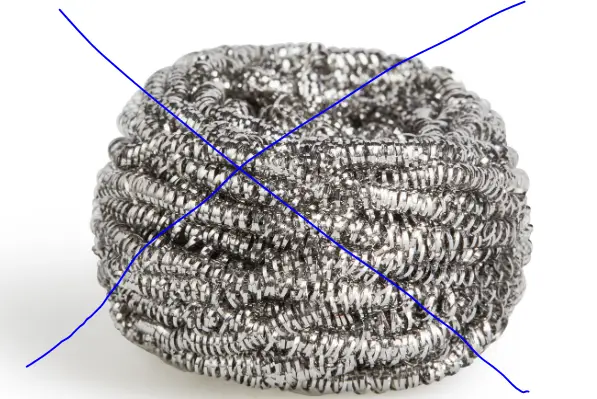
Can I use steel wool to clean my Cuisinart Meat Slicer?
No, you should never use steel wool or any abrasive cleaning materials on your Cuisinart Meat Slicer. Steel wool can scratch the surfaces and damage the slicer. Stick to soft sponges or cloths for cleaning.
Conclusion
Regular cleaning of your Cuisinart Meat Slicer is vital for maintaining food safety and optimal performance. By following the recommended cleaning steps, such as disassembling the parts, using a mild cleaning solution, and ensuring thorough drying, you can effectively remove food residue and prevent the growth of harmful bacteria. Additionally, proper sanitization and adherence to manufacturer instructions contribute to a clean and safe slicing experience. Remember, cleaning should be done after each use and more frequently in continuous-use scenarios.
Key Notes and Important Points
- Cleaning your Cuisinart Meat Slicer is essential for food safety.
- Regular cleaning prevents bacterial growth and contamination.
- Always unplug and turn off the slicer before cleaning.
- Disassemble the removable parts and wash them in a mild soapy solution.
- Rinse all parts thoroughly and dry them completely before reassembling.
- Wipe down the main body of the slicer and sanitize the blade and surfaces.
- Do not use abrasive materials or submerge the slicer in water.
- Clean the slicer after each use and more frequently in continuous use.
- Refer to the user manual for specific cleaning instructions and dishwasher compatibility.
- Follow safety guidelines and precautions when handling the sharp blade of the slicer.
References And Citations:
- Cuisinart Food Slicer Manual – Refer to the official Cuisinart Food Slicer manual for detailed instructions on using and cleaning the slicer.
- Authorized Service Centers https://www.reference.com/world-view/cuisinart-service-centers-354ef48c524a018e – Locate authorized service centers recommended by Cuisinart for professional servicing and repairs of your slicer.
- Proper Blade Care https://towncutler.com/pages/care-and-maintenance– Learn more about the proper care and maintenance of blades in kitchen appliances, including tips for cleaning and handling them effectively.
- Food Safety Guidelines – Explore food safety guidelines provided by the U.S. Food Safety and Inspection Service to understand the importance of proper cleaning and hygiene practices in food preparation.
- Choosing the Right Cut-Resistant Gloves https://ehsdailyadvisor.blr.com/2022/05/how-to-choose-cut-resistant-safety-gloves/ – Find information on selecting appropriate cut-resistant gloves for kitchen safety, including recommendations for different types of glove materials.
- Cleaning Tips for Kitchen Appliances https://www.bhg.com/homekeeping/house-cleaning/tips/how-to-clean-appliances/– Explore comprehensive cleaning tips for various kitchen appliances, including guidance on proper techniques and suitable cleaning agents.

John Hebdon is a food enthusiast, passionate chef, and author of various articles and blog posts related to food and cooking. With a deep love for all things culinary, John’s blog serves as a platform to share his extensive kitchen experiences with a broader audience.
In addition to his culinary expertise, John has a flair for writing and a natural ability to share his passion for food with others. His articles and blog posts are informative, engaging, and packed with practical tips for readers of all skill levels.
As a food enthusiast and writer, John is always on the lookout for new and exciting culinary experiences. Whether it’s trying out a new restaurant, experimenting with a new recipe, or simply sharing a favorite dish with friends and family, John is always eager to explore and share the world of food with others.

